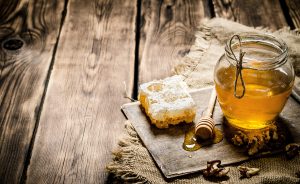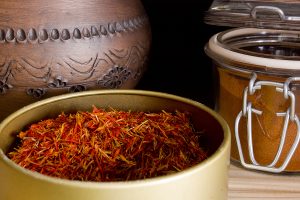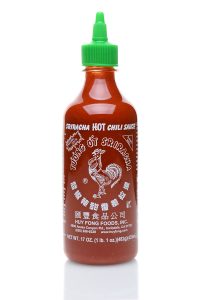(Editor’s Note: I know I say it a lot but, I’m a vegan so there are quite a few things here that I wouldn’t eat anyway, but I was intrigued by the topic. Read on. )
Who doesn’t look forward, in the cold winter months, to a big bowl of pasta? Maybe even with some parmesan cheese? Or perhaps you WOULD have looked forward to that before you heard the news that the parmesan in the cans at the store is just cheese and wood pulp- a filler- yuck.
With that in mind, have you ever thought about what else you might be eating that’s absolutely disgusting? Well, here’s a small list of 13 “foods” that are often mislabeled, misnamed, or simply misunderstood.
Grated Parmesan Cheese
The FDA says that Cellulose, which is made from wood pulp, is a safe food additive when used as an anti-clumping agent, acceptable at levels of 2% to 4% (gross). But, just this last year Bloomberg News found that multiple brands of “100% Grated Parmesan Cheese” had 7.8% to 8.8% cellulose (they also mix it with less expensive cheese like swiss, mozzarella, and cheddar). One expert even estimated that 20% of U.S.-produced grated Parmesan cheese is mislabeled.
Breakfast Syrup and Maple Products
As a kid growing up, we ate Aunt Jemima “maple syrup” and had zero idea it was the furthest thing from actual maple syrup. However, once we tasted the difference, it was clear. And to that point, last February maple industry groups sent a letter to the FDA, protesting foods that are labeled as maple even though there is no maple in the ingredients.
Extra-Virgin Olive Oil
The EVOO industry can be a little bit less than honest. This is one product that you MUST read the label on.
“The truth is, there’s often nothing virgin about most of the “extra-virgin” olive oil sold in the U.S., and fraudulent oil, 50% by some estimates, is often vegetable oils and artificial coloring. Four out of 10 bottles that claim to be Italian olive oil are just packed or transported through Italy and are not made from Italian olives. Recently, an Italian criminal investigation was launched against seven of the country’s top olive oil companies after tests revealed nine out of every 20 bottles were fraudulent. They were accused of importing canola and soybean oil to mix into their olive oil sold as extra-virgin,” reports the article.
Honey 
Can you believe that sweet, innocent, gift from bees, honey- makes up 7% of food fraud cases? In 2013, a huge “honey laundering” scheme was uncovered in China of all places. Adulterated Chinese honey, some mixed with sweeteners, antibiotics, and pesticides, was found to be being shipped through other countries in order to disguise its origin (for importation and sale in the U.S.).
Truffle Oil
Normally, truffle oil isn’t made with actual truffles- it’s actually made with compounds like 2,4-dithiapentane. But, you can tell what you’re getting by smelling it; the strong smell and flavor that many associate with truffle oil is actually the chemical compound, where as the real thing has an earthy and more subtle flavor.
https://www.youtube.com/watch?v=xhlH0WuexCM
 Saffron
Saffron
From the article, “At $2,000 to $10,000 per pound, saffron is one of the most expensive spices in the world. When the Crocus sativus flower blooms for a few weeks every year, the stigmas are harvested to create the spice; it takes about 70,000 flowers to create one pound. So it’s no surprise that there’s counterfeit saffron.”
But just what do they use? Dyed corn silk, flowers from safflower, beet fiber, or even red bits of paper are passed off as saffron! And ground saffron is sometimes mixed with turmeric, bark or paprika. Until recently when the European Union crackdown, “Spanish saffron” often came from Iran, where more than 80% of it is grown.
Wasabi
That lovely, tasty condiment that comes with your sushi is normally a mix of horseradish, mustard, and food coloring. The real stuff, made from the root of the wasabi plant, is harvested from riverbeds, must be freshly grated, and loses its herbal flavor in only 15 minutes.
It’s estimated that only 5% of wasabi served in Japanese restaurants around the world contains the root of Wasabia japonica.
Caviar
Traditionally, caviar was the salted fish eggs (or roe) of sturgeon from rivers that feed into the Caspian and Black Seas. However, due to overfishing and pollution, that is now rare as the sturgeon have become endangered. What you are actually getting when you eat caviar is roe from paddlefish (which has survived since the time of the dinosaurs’ and is now going extinct), bowfin, salmon, lumpfish, hackleback sturgeon, and white sturgeon.
Sriracha

Sriracha is made by Huy Fong Foods in California but as “sriracha” isn’t a trademarked term, other brands like Frito-Lay, Heinz, Frank’s RedHot, Kikkoman, and Subway have come up with their own versions of the spicy, red sauce.
Apparently, though, that’s just fine with the owner, David Tran. He told the Los Angeles Times that all the imitators are just free advertising for his original recipe!
Bacon Bits
Some brands of bacon bits are really just pieces of flavored soy flour (which makes them vegan!). However, some brands like Hormel and Oscar Mayer use real bacon.
Pomegranate Juice
Pomegranates are a delicious, healthy, and time-consuming snack. Pomegranate juice is therefore a quick and easy way to get some of the health benefits (like improved heart health and an antioxidant boost). But a few years ago, POM Wonderful filed a lawsuit against the Coca-Cola Co. that went all the way to the Supreme Court, which it was ruled that Coca-Cola’s Minute Maid Pomegranate Blueberry juice was false advertising because it was mostly apple and grape juices- not even mostly BLUEBERRY! Labels people. Gotta read the labels.
White Chocolate
This is actually an easy one that most people already know: white chocolate is a blend of cocoa butter (also derived from chocolate liquor), sugar, vanilla, milk products, and lecithin, a fatty emulsifier (ewww).
Pringles
Pringles are actually potato chips (even though they contain less than 50% potato) but I’d only loosely call them “food”. The rest of the snack is made from rice, wheat, and corn.
Worried about all this stuff? It’s easy- just don’t eat it! Stick to the outside of the super market or hit up your local farmers market and you won’t even have to check the label!
Source: Deal News












